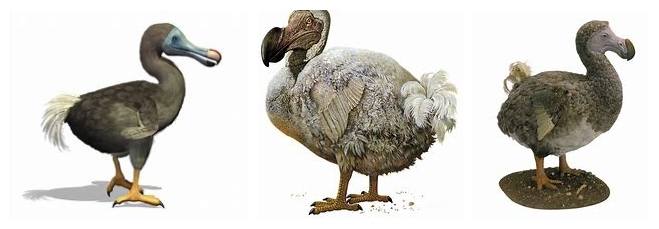The Dodo bird is an extinct species. These birds are part of the Columbidae clade but are classed in the sub family of Raphinae. The Columbidae are made up of Doves and Pigeons. Except from the dodo bird the Raphinae sub family also contains the closely related Rodrigues Solitaire, which also happens to be extinct. Therefore the Raphinae sub family holds all extinct species of birds. The proper scientific name of the dodo is Raphus Cucullatus.
A fact to note when researching on the dodo bird is that many information may not be 100% resolved due to the little amount of evidence and knowledge about this extinct species of bird. The dodo bird was last known to be seen around 1662.
Habitat
Dodo birds are known to be unique to the island of Mauritius located to the east of Madagascar in the Indian Ocean. On the island its main habitat was known to be dry coastal areas that contained forest areas.
Food
There is little known about the food that the dodo bird would eat. However there was a written document from around 1661 one that states it food, although this document was lost. The food stuff that would be eaten by the bird would be that of like pigeons; fruits, nuts and seeds. There is also some evidence or belief that they would eat shellfish and even crabs that resident on the island, this is similar to the crowned pigeon.
Appearance of the Dodo Bird
From remains that have been discovered and studied, more namely sub-fossils of the Dodo bird have found the bird to stand around 3 foot tall and weigh up to 18kg. However its plumage and other appearance characteristics have been hard to tell and find evidence for. Much information has come from drawings, paintings and written documents dating to the 17th century so may not be truly accurate.
However from information that is contained on the Dodo bird it is believed to have a dense clump of tail feathers, their feet being yellow in colour, a black, yellow and even green beak and their overall/main feathers being brown and grey in colour. The beak is very large in length, reaching an estimated 9 inches in length and being hooked. This allowed the dodo bird to crush and get their food more easily such as crabs as well as have a defence to any predators that may attack or eat their eggs.
Like its close relative the Rodrigues Solitaire, the dodo bird was a flightless bird. It is thought due to this the dodo bird managed to contain its weight and size. However the abundance of food as well as having no natural predators makes it a good reasoning why the bird was actually flightless and didn’t need wings.

Extinction
There has been debate over the actual extinction date due to supposed sightings of the Dodo bird. Although supposedly sightings were made of the dodo bird after 1662 they were never proved to be true and the last known and believed to be true sighting was in 1662.
The natural and somewhat small habitat of the Dodo bird made them isolated and contained. As well as having no real predators in the wild they became fearless of any human visitors or sightings, this is common to all isolated species with no real predators. Due to this the Dodo bird had become easy takings for all sailors or explorers that needed food or perhaps any value the bird offered to them. Of course these visitors to the island also took part in the destruction of their habitat. The population of human residents of the island was minimal during the 17th century but still would have also helped in the destruction of its habitat. Explorers and sailors would have also taken other animals with them on the expeditions that lead to reproduction decrease by eggs being eaten or destroyed. It is know that pigs, rats and dogs where some of those animals.
Other then the main extinction cause of humans there was also some nature. More recently in the 21st century it was discovered from through fossil remains of the bird that flash floods claimed the lives of these birds. Although due to its isolation on the island of Mauritius there is thought to be believed that the population of the dodo bird was also minimal. All of these factors has lead to the extinction of the dodo bird.
Dodo Bird Facts
Some quick fire facts about the Dodo Bird:
Unfortunately they are an Extinct Species.
Nicobar pigeons are the closely related but a living relative of the extinct Dodo bird.
Feed on fruit, seeds, nuts and possibly crabs and shellfish too.
They are flightless birds
Related to the bird family of pigeons and doves
Large in size, up to 3 feet tall and have large beaks being up to 9 inches.
Nowadays, dodo bird facts are one of the most searchable topics online because of its association with all extinct species. Sometime in the 21st century, Dodo birds have come to represent not just the extinct species but all the endangered species as well. The renowned phrase “as dead as dodo” has been made-up to imply a hopeless situation, like “deader than dead situations” or any event or thing which has been wiped out, leaving no significant traces at all. One more searchable facts nowadays is that it already achieved a widespread recognition due to a remarkable role in the movie “Alice in Wonderland”, and after this, dodo birds already become a symbol of annihilation and obsolescence.

